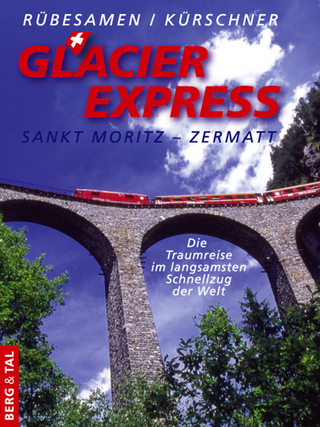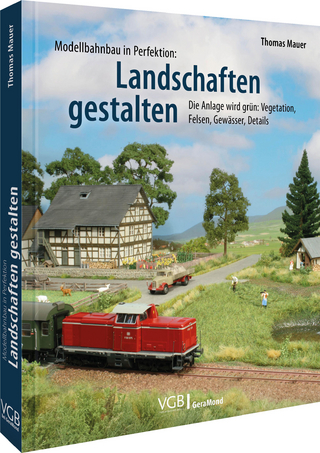
The GWR Handbook 1923-1947
Seiten
2007
Sutton Publishing Ltd (Verlag)
978-0-7509-4217-1 (ISBN)
Sutton Publishing Ltd (Verlag)
978-0-7509-4217-1 (ISBN)
- Titel z.Zt. nicht lieferbar
- Versandkostenfrei innerhalb Deutschlands
- Auch auf Rechnung
- Verfügbarkeit in der Filiale vor Ort prüfen
- Artikel merken
Looking at the history and achievements of the Great Western Railway, this book includes photographs and diagrams illustrating the GWR's equipment and some railway stations, its network, shipping and air services, and bus operations. It covers accidents, freight operations, diesel railcars, operations during Second World War, and nationalisation.
Uniquely among Britain's railways, the Great Western Railway retained its identity from the time of its incorporation in 1835 until nationalisation in 1948. This was one of the great railways, so much so that for some enthusiasts it was the railway, even attracting such epithets as 'God's Wonderful Railway' among the more dedicated. Even so, the amalgamations of 1923 saw the company absorb many smaller concerns, so that the post-grouping GWR was in some respects a different railway from that had grown up during the nineteenth and early twentieth centuries. The grouping saw the GWR absorb some significant concerns with strong, albeit local, networks. Fortunately the GWR dominated these companies to the extent that it was able to impose its will and identity on them, so that it was spared the infighting that so marred the new London Midland Scottish, or the regionalisation that left the London and North Eastern adrift, and simply did not paper over the cracks with some token changes as happened on the Southern.
The GWR had suffered from an uneven performance during the early years of its history, and only really became the prestigious organisation that so many people came to love during the early twentieth century, setting speed records including the first, albeit unofficial, one of more than 100mph with the locomotive City of Truro. At one stage between the wars the GWR operated the world's fastest regular service with the express Cheltenham Flyer, while attempting to improve the efficiency and economics of the quieter branch lines with diesel railcars. Typically, it celebrated its centenary with special wide-bodied 'Centenary Riviera' carriages. "The Great Western Railway Handbook 1923-1947" looks at the history and achievements of one of the great railway companies, if not the greatest. For many, the GWR was synonymous with holidays by the sea in the West Country, but it was originally formed to link London and Bristol. The area and extent of its operations was large, extending as far north as Merseyside, providing most of the railway services in Wales, as well as being the main line to Cardiff, Bristol, Cornwall and, often forgotten today, Birmingham.
The book begins with a brief history of the GWR before the grouping, and a survey of the other companies, such as the Cardiff Railway and the Taff Vale Railway, that joined the GWR in 1923. It also looks at the leadership of the company. The post-grouping GWR's history is given, with reference information on its locomotives, named expresses, rolling stock, depots and major termini, including the role of Birmingham as the interchange point, and bottleneck, for cross-country expresses , as well as the extensive ventures in shipping and ports, in bus and air services. Other features are covered in chapters on accidents, freight operations, diesel railcars, operations during the Second World War, and then on nationalisation. The book concludes with a chapter looking at what might have been, based on the GWR's own Last Look Forward, post-war plans for the widespread introduction of diesel locomotives and reconstruction.
The book includes photographs and diagrams illustrating the GWR's equipment and some railway stations, its network, shipping and air services, bus operations, including Western National, some comparative timetables showing progress between 1923 and 1938 (the last year of true peacetime operation), as well as lists of locomotives.
Uniquely among Britain's railways, the Great Western Railway retained its identity from the time of its incorporation in 1835 until nationalisation in 1948. This was one of the great railways, so much so that for some enthusiasts it was the railway, even attracting such epithets as 'God's Wonderful Railway' among the more dedicated. Even so, the amalgamations of 1923 saw the company absorb many smaller concerns, so that the post-grouping GWR was in some respects a different railway from that had grown up during the nineteenth and early twentieth centuries. The grouping saw the GWR absorb some significant concerns with strong, albeit local, networks. Fortunately the GWR dominated these companies to the extent that it was able to impose its will and identity on them, so that it was spared the infighting that so marred the new London Midland Scottish, or the regionalisation that left the London and North Eastern adrift, and simply did not paper over the cracks with some token changes as happened on the Southern.
The GWR had suffered from an uneven performance during the early years of its history, and only really became the prestigious organisation that so many people came to love during the early twentieth century, setting speed records including the first, albeit unofficial, one of more than 100mph with the locomotive City of Truro. At one stage between the wars the GWR operated the world's fastest regular service with the express Cheltenham Flyer, while attempting to improve the efficiency and economics of the quieter branch lines with diesel railcars. Typically, it celebrated its centenary with special wide-bodied 'Centenary Riviera' carriages. "The Great Western Railway Handbook 1923-1947" looks at the history and achievements of one of the great railway companies, if not the greatest. For many, the GWR was synonymous with holidays by the sea in the West Country, but it was originally formed to link London and Bristol. The area and extent of its operations was large, extending as far north as Merseyside, providing most of the railway services in Wales, as well as being the main line to Cardiff, Bristol, Cornwall and, often forgotten today, Birmingham.
The book begins with a brief history of the GWR before the grouping, and a survey of the other companies, such as the Cardiff Railway and the Taff Vale Railway, that joined the GWR in 1923. It also looks at the leadership of the company. The post-grouping GWR's history is given, with reference information on its locomotives, named expresses, rolling stock, depots and major termini, including the role of Birmingham as the interchange point, and bottleneck, for cross-country expresses , as well as the extensive ventures in shipping and ports, in bus and air services. Other features are covered in chapters on accidents, freight operations, diesel railcars, operations during the Second World War, and then on nationalisation. The book concludes with a chapter looking at what might have been, based on the GWR's own Last Look Forward, post-war plans for the widespread introduction of diesel locomotives and reconstruction.
The book includes photographs and diagrams illustrating the GWR's equipment and some railway stations, its network, shipping and air services, bus operations, including Western National, some comparative timetables showing progress between 1923 and 1938 (the last year of true peacetime operation), as well as lists of locomotives.
David Wragg is the author of more than twenty books, including five for Sutton Publishing and one for Haynes. A former journalist, he has written on transport and defence for a number of national newspapers and magazines, including the Sunday Telegraph and the Spectator. He lives in Scotland.
| Erscheint lt. Verlag | 2.2.2007 |
|---|---|
| Zusatzinfo | 150 black and white illustrations |
| Verlagsort | Stroud |
| Sprache | englisch |
| Maße | 194 x 263 mm |
| Themenwelt | Natur / Technik ► Fahrzeuge / Flugzeuge / Schiffe ► Schienenfahrzeuge |
| ISBN-10 | 0-7509-4217-7 / 0750942177 |
| ISBN-13 | 978-0-7509-4217-1 / 9780750942171 |
| Zustand | Neuware |
| Haben Sie eine Frage zum Produkt? |
Mehr entdecken
aus dem Bereich
aus dem Bereich
St. Moritz – Zermatt : die Traumreise im langsamsten Schnellzug der …
Buch | Hardcover (2023)
Verlag Berg & Tal
14,95 €
Betriebsmaschinendienst, Einsatz bei den Bahnbetriebswerken und …
Buch | Hardcover (2024)
EK-Verlag
54,00 €
Buch | Hardcover (2023)
GeraMond (Verlag)
27,99 €


